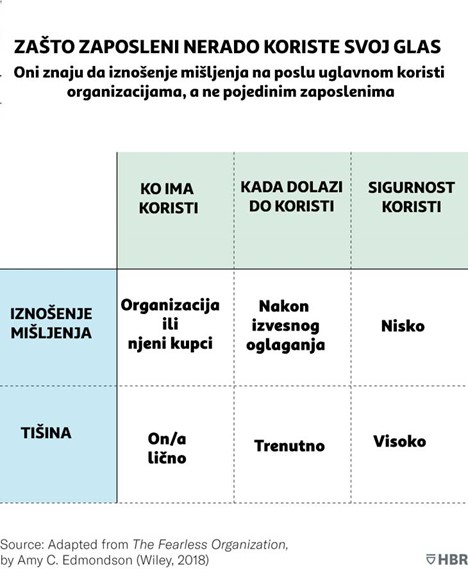RETAILING MANAGEMENT, 9th Edition
Autori: Michael Levy, Barton Weitz, Dhruv Grewal
ISBN: 978-125-906-066-3
Izdavač: McGraw-Hill
Godina: 2013.
Opšte informacije: Meki povez, 704 str., 21,3 cm x 27,4 cm
Jezik: Engleski jezik
Dostupnost: Ne
- Opis
- Komentari (0)
Opis
Retailing Management's 9th edition places critical and practical emphasis on five exciting new developments in retailing's high tech, global, growth industry: (1) big data and analytical methods for decision making, (2) communicating with customers and enhancing the shopping experience with social media and smart phones, (3) utilizing mobile channels and providing a seamless multichannel customer experience, (4) engagement in corporate social responsibility and the social considerations of business decisions, and (5) the impacts of globalization on the retail industry. With focus on some of the most admired and sophisticated retailers in the world like Wal-Mart, Home Depot, Amazon, Starbucks, and Kroger, the 9th edition of Retailing Management provides challenging and rewarding opportunities for students interested in retailing careers and careers with companies such as IBM, Procter & Gamble, and Google that support the retail industry. New Vignettes in each chapter and the addition of Connect with SmartBook help the 9th edition of Retailing Management maintain and grow as the market's leading Retailing franchise.
New Features
• New Focus on Big Data and the Use of Analytical Methods in Retailing Chapter 11 (Customer Relationship Management) includes a discussion of how retailers use frequent shopper programs to collect customer data by including a new section on the analysis of big data to improve decision-making. Some examples of the use of analytical method discussed in the new edition are:
• Improving store design and promotion planning using market basket analysis (Chapters 11, 15, and 17)
• Two approaches for SKU rationalization (Chapter 11, 12)
• Optimizing the timing and depth of mark down decisions (Chapter 14)
• Targeting promotions to increase effectiveness (Chapters 11, 15)
• Dynamic pricing (Chapter 14)
• Determining where merchandise categories should be placed in a store and website (Chapter 17)
• Scheduling store employees to make sure there are an appropriate number of sales associates at different times of the day and days in the week. (Chapter 15)
• We have added a number of new illustrations (Retailing Views) of how retailers such as CVS and Kroger are using these retail analytics to gain a competitive advantage. The executive profile for Chapter 11 outlines how an entrepreneur built a successful consulting business by developing and implementing the use of retail analytics on big data.
• New Illustrations of Mobile Channel as Part of a Multichannel Offering Most retailers are multi-channel since they have added an Internet channel to their store and/or catalog offering. We have expanded our discussion of the mobile channel in Chapter 3 and throughout the textbook. For example, we have:
• Reviewed the benefits and limitations of the mobile channel compared to other channels (Chapter 3).
• Outlined the impact of mobile on shopping behaviors such as showrooming and how retailers are dealing with the increased ease of getting price information (Chapters 3, 14).
• Discussed the role of mobile in providing a seamless, omni-channel interface for customers (Chapter 3).
• Described the use of mobile in delivering coupons and in-store promotions (Chapter 15).
• New Retailing View on Staples' mobile strategy and how it reaches out to its customers through their smart phones (Chapter 15)
• New Discussions on Social Responsibility of Retailers Illustrations of the role retailers play in addressing social welfare issues are highlighted with legal/ethical icons in the margins. Some new examples examined in this edition are:
• New Retailing View on Wal-Mart's greener supply chain (Chapter 10)
• Consumer interest in green and local products (Chapter 4).
• New Retailing View of buying green on an Amazon-owned site - Vine.com (Chapter 10)
• New Retailing View on Amazon's price check apps and showrooming
• Expanded discussion of privacy issues arising from collecting customer data, (Chapter 11)
• Ethical issues in sourcing merchandise globally (Chapter 13).
• New Retailing view on TOMS shoes social objectives (Chapter 6)
• Sustainability issues in store operations (Chapter 16) and design (Chapter 17).
• Role of retailing in advancing the welfare of people at the bottom of the pyramid (Chapter 1)
• New Focus on Globalization of the Retail Industry With a greater emphasis being placed on private-label merchandise, retailers are working with manufacturers throughout the world to acquire merchandise. Some examples of the global retailing issues, identified with icons in the margins, examined in this edition are:
• New Retailing View on Wet Markets in Shanghai (Chapter 1)
• New Retailing View --For China's High-End Fashion Consumers, “Italy” Now Just A Bullet Train Away (Chapter 7)
• Executive Briefing describes the CEO of Outback Steakhouse International deals with international expansion (Chapter 5)
• New Retailing View of 7-Eleven in Indonesia (Chapter 5)
• Retail efficiencies in different economies (Chapter 1).
• Two executive briefings from senior managers in retail companies headquartered outside the U.S (Chapters 2, 17).
• Five of the new cases at the end of the text are based on retailers operating outside of the U.S.
• New - Each chapter offers key Learning Objectives in the beginning of the chapter then a numbered icon appears adjacent to the appropriate material in the chapter. These same objectives are linked to the material in Connect Marketing. These online tools greatly facilitate student learning.
• New Pedagogical Feature in each chapter. Each chapter has 4 to 6 Retailing Views - vignettes that describe how a retailer deals with the issues raised in the chapter. There is a discussion question to each of these Retailing Views to motivate students to develop a better understanding of the application of the concepts presented in the text. Over 50 percent of the Retailing Views are new and the rest have been updated. Some examples of the Retailing Views in the ninth edition are:
• Avon's direct selling channel in Brazil (Chapter 3)
• Urban Outfitter targeting Millennium customers (Chapter 4)
• 11 New Cases - There are 11 brand new cases in 9e including: Blue Tomato: Internationalisation of a Multichannel Retailer (Austria), Staples Inc., Parisian Patisserie “Maison Laduree” : The Conquest of the US Market (France), Starbucks' Expansion into China, Wal-Mart: Pioneer in Supply Chain Management, Tiffany & Co. and TJX: Comparing Financial Performance, Sephora loyalty programs: A comparison between France and the US, Mel's Department Store Under New Management, Kroger and Fred Meyer: Sourcing Products in a Global Marketplace, Target and its New Generation of Partnerships, Zipcar: Delivering Only as Much Driving as You Want. Five of these cases are about global issues. All 38 cases in the textbook are either new or updated with current information.
• 18 New Videos - There are 18 new videos, many of which are coordinated with discussion questions on Connect Marketing for Retailing Management. The new videos are: Panera Bread's Commitment to Excellence; Zappos.com; Working for the Best: The Container Store; Wal-Mart's Public Image Campaign; McDonald's Taps Ethnic Subcultures for Ongoing Growth; Bass Pro Shops: Maximizing the In-store Experience; Inside one of Amazon's busiest days; Customer service at Ritz Carlton and Apple; Future of Retail; The Mobile Factor [The Connected Consumer]; Tesco virtual stores in Korea; RFID Network Retail; Starbucks Human Resource Management; and Lord & Taylor Shoe Department.
• New! LearnSmart ensures your students are learning faster, studying more efficiently, and retaining more knowledge. It pinpoints concepts the student does not understand and maps out a personalized study plan for success. Based on students' self-diagnoses of their proficiency, LearnSmart intelligently provides students with a series of adaptive questions. This provides students with a personalized one-on-one tutor experience.
• New! SmartBook - Fueled by LearnSmart - SmartBook is the first and only adaptive reading experience available today. Distinguishing what a student knows from what they don't, and honing in on concepts they are most likely to forget, SmartBook personalises content for each student in a continuously adapting reading experience. Reading is no longer a passive and linear experience, but an engaging and dynamic one where students are more likely to master and retain important concepts, coming to class better prepared. Valuable reports provide instructors insight as to how students are progressing through textbook content, useful for shaping in-class time or assessment. As a result the adaptive reading experience found in SmartBook, students are more likely to retain knowledge, stay in class and get better grades.
• New Attention to Social Media Chapter 15 (Retail Communications) now focuses on how retailers are using social media to provide more information about their offering and to build relationships with their customers. Examples of other applications of social media, illustrated with an icon in the margin, that are new in this edition are:
• The impact of social media and a multi-channel offering on the consumer buying process (Chapters 3, 4)
• Discussion on how to build a retail community using social media (Chapter 5)
• Executive briefing on a young social media manager working for a fashion apparel retail chain on how she develops relationships with fashion bloggers (Chapter 15)
• The use of social media in developing an integrated marketing communication program (Chapter 15)
• Illustration of how REI (Chapter 15), Build A Bear (Chapter 3) and American Girl (Chapter 11) use social media to build a sense of community and loyalty among their customers
Table of Contents
SECTION I - THE WORLD OF RETAILING
Chapter 1: Introduction to the World of Retailing
Chapter 2: Types of Retailers
Chapter 3: Multichannel Retailing
Chapter 4: Customer Buying Behavior
SECTION II - RETAILING STRATEGY
Chapter 5: Retail Market Strategy
Chapter 6: Financial Strategy
Chapter 7: Retail Locations
Chapter 8: Retail Site Location
Chapter 9: Human Resource Management
Chapter 10: Information Systems and Supply Chain Management
Chapter 11: Customer Relationship Management
SECTION III - MERCHANDISE MANAGEMENT
Chapter 12: Managing the Merchandise Planning Process
Chapter 13: Buying Merchandise
Chapter 14: Retail Pricing
Chapter 15: Retail Communication Mix
SECTION IV - STORE MANAGEMENT
Chapter 16: Managing the Store
Chapter 17: Store Layout, Design, and Visual Merchandising
Chapter 18: Customer Service
MICHAEL LEVY, PhD, is the Charles Clarke Reynolds Professor of Marketing and Director of the Retail Supply Chain Institute at Babson College. He received his PhD in business administration from The Ohio State University and his undergraduate and MS degrees in business administration from the University of Colorado at Boulder. He taught at Southern Methodist University before joining the faculty as professor and chair of the marketing department at the University of Miami. Professor Levy has developed a strong stream of research in retailing, business logistics, financial retailing strategy, pricing, and sales management. He has published over 50 articles in leading marketing and logistics journals, including the Journal of Retailing, Journal of Marketing, Journal of the Academy of Marketing Science, and Journal of Marketing Research. He currently serves on the editorial review board of the Journal of Retailing, Journal of the Academy of Marketing Science, International Journal of Logistics Management, International Journal of Logistics and Materials Management, ECR Journal, and European Business Review. He is coauthor of Retailing Management, 6e (2007), the best-selling college-level retailing text in the world. Professor Levy was co-editor of Journal of Retailing from 2001–2007. Professor Levy has worked in retailing and related disciplines throughout his professional life. Prior to his academic career, he worked for several retailers and a housewares distributor in Colorado. He has performed research projects with many retailers and retail technology firms, including Accenture, Federated Department Stores, Khimetrics, Mervyn’s, Neiman Marcus, ProfitLogic (Oracle), Zale Corporation, and numerous law firms. He co-chaired the 1993 Academy of Marketing Science conference and the 2006 Summer AMA conference.
DHRUV GREWAL, PhD (Virginia Tech), is the Toyota Chair in Commerce and Electronic Business and a professor of marketing at Babson College. His research and teaching interests focus on marketing foundations, marketing research, retailing, pricing, and value-based strategies. He was awarded the 2005 Lifetime Achievement in Behavioral Pricing Award by Fordham University. He is a “Distinguished Fellow” of the Academy of Marketing Science. He has also coauthored Marketing Research (2004, 2007). Professor Grewal has published over 70 articles in journals such as Journal of Marketing, Journal of Consumer Research, Journal of Marketing Research, Journal of Retailing, and Journal of the Academy of Marketing Science. He currently serves on numerous editorial review boards, including Journal of Retailing, Journal of the Academy of Marketing Science, Journal of Interactive Marketing, and Journal of Public Policy & Marketing. He served as co-editor of Journal of Retailing from 2001–2007. Professor Grewal has won many awards for his teaching including, 2005 Sherwin-Williams Distinguished Teaching Award, SMA; 2003 AMA Award for Innovative Excellence in Marketing Education; 1999 AMS Great Teachers in Marketing Award; Executive MBA Teaching Excellence Award (1998); School of Business Teaching Excellence Awards (1993, 1999); and Virginia Tech Certificate of Recognition for Outstanding Teaching (1989). He co-chaired: 1993 AMS Conference, 1998 Winter AMA Conference, a 1998 Marketing Science Institute Conference, 2001 AMA doctoral consortium, and 2006 Summer AMA Conference. Professor Grewal has taught executive seminars and courses and/or worked on research projects with numerous firms, such as IRI, TJX, Radio Shack, Monsanto, McKinsey, Motorola, and numerous law firms. He has taught seminars in the U.S., Europe, and Asia.
























